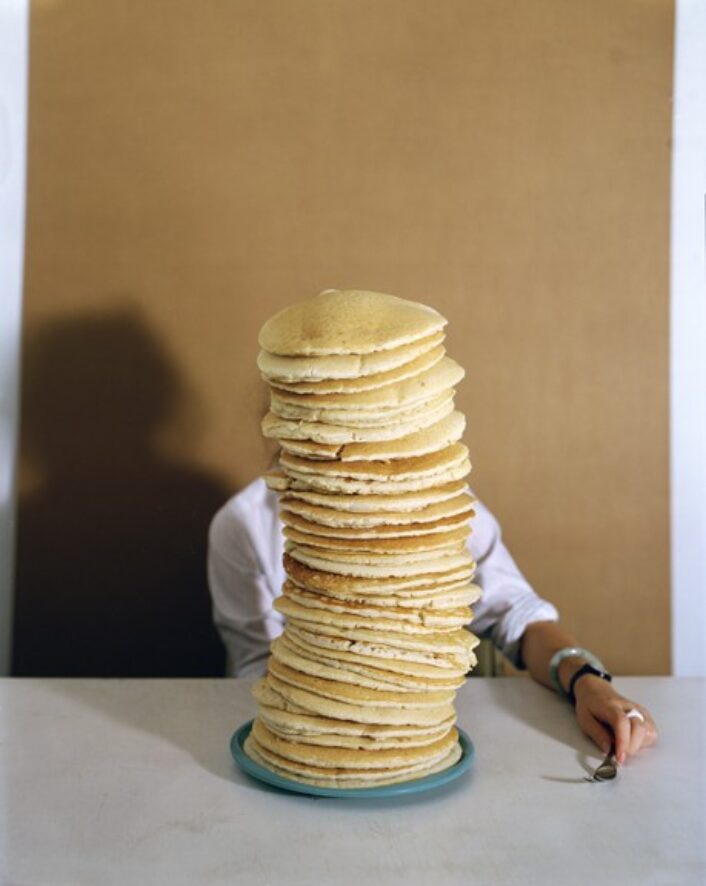Fine Art
Lee Krasner’s much deserved retrospective
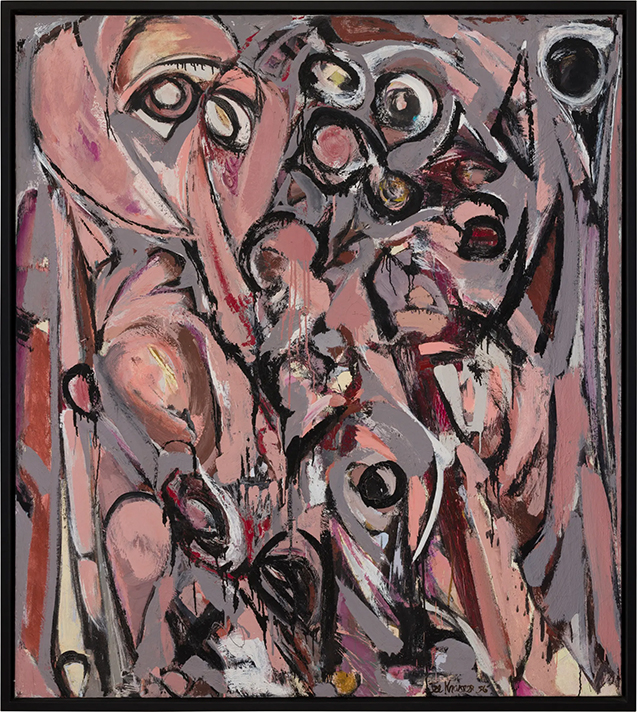
“Embrace”, 1956.
Krasner painted this piece after Pollock’s funeral. Soon after his death, Krasner started working on a series of erotic landscapes in shades of grey, pink, and black as a way to manage her grief.
Image courtesy of: The Guardian, photographed by: Christopher Stach
For the first time in over fifty years, a Lee Krasner exhibition will take place in Europe. This wonderful show at the Barbican Art Gallery in London will showcase Lee Krasner’s amazing contribution to abstract expressionism which, for years, was gravely overshadowed by her husband, Jackson Pollock. Through the years, Krasner was better known as Pollock’s keeper than as an artist in her own right. Never developing a signature image, Krasner worked in cycles; she had many ideas that she needed to articulate on canvas. Krasner believes that art was “an expression of the inner self and that to have a signature image would be to suggest there is no contingency in life.”
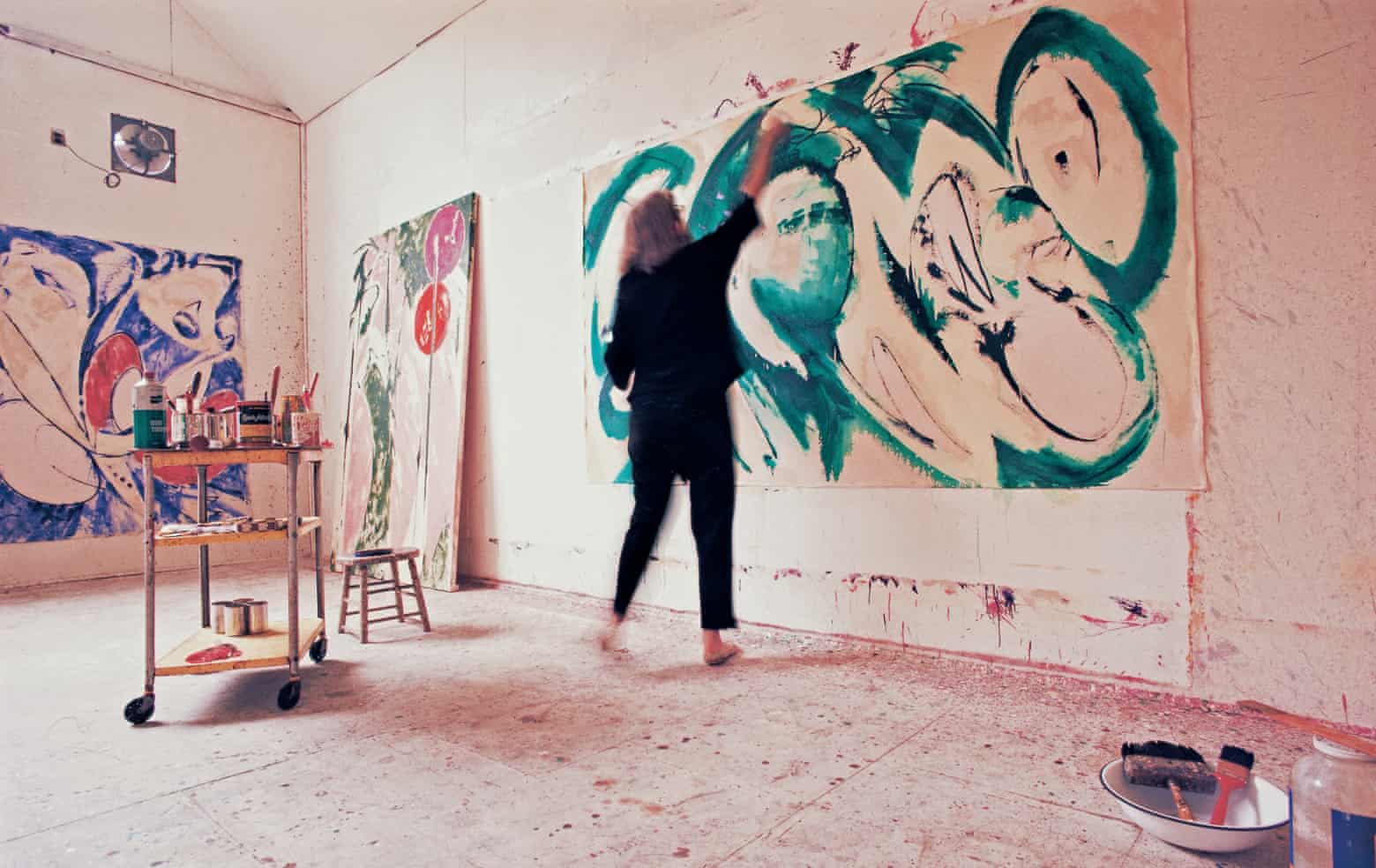
A photograph of the artist in her studio sometime during the 1960’s. Here, she is painting “Portrait in Green”.
Image courtesy of: The Guardian, photographed by: Mark Patiky
Krasner was 75 before she finally got her own American retrospective which was put on at the Houston Museum of Fine Arts in 1983. This was because Krasner was always thought of as secondary to her famous husband and contemporaries such as Willem de Kooning and Mark Rothko.
The Barbican will feature nearly 100 works; some on view in Britain for the first time and one that has never been seen before in Europe (due to its size). The retrospective will also feature photographs of the artist taken by her good friend, Ray Eames. Eleanor Nairne, the show’s curator, put together a show that is a wonderful assessment of Krasner’s fifty year career.
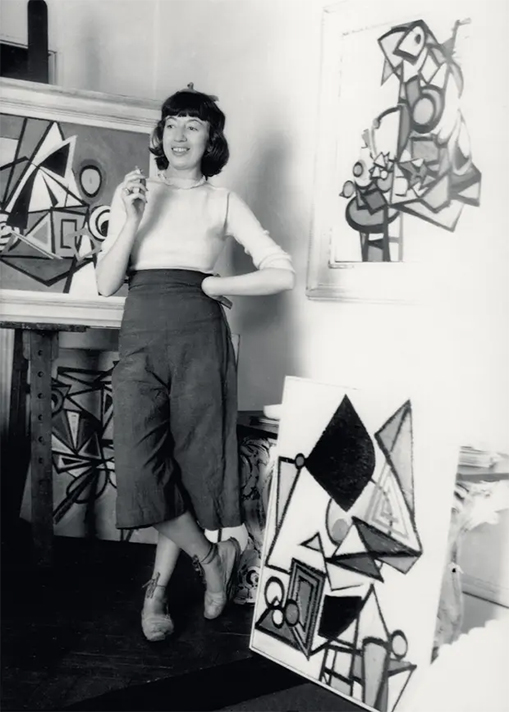
Lee Krasner in her New York City studio, 1939.
Image courtesy of: The Guardian, photograph courtesy of: Maurice Berezov
As the story goes, in 1945 Jackson Pollock and Lee Krasner were middle-aged artists who moved from New York City to the village of Springs on Long Island. With no money, it would be some time before they could turn the dilapidated farmhouse they bought into a decent home. In fact, in order to purchase this structure, Pollock had to persuade his gallery, Peggy Guggenheim, to lend him $2,000 as a down-payment. The move from the city was intended to help Pollock work on his sobriety; sadly, it was not enough.
After his death in 1956, Krasner stayed in Long Island with occasional time spent at her small NYC apartment. However, as much as she loved the house, it was the barn which was the most significant part of the house. Pollock had moved this building to one side of the home and set up his studio inside. This is where Pollock made all the “drip” paintings he is known for. After his death, Krasner started using the barn as her studio, she explained that there was no reason to let it stand empty. It was large, and had the best natural light.
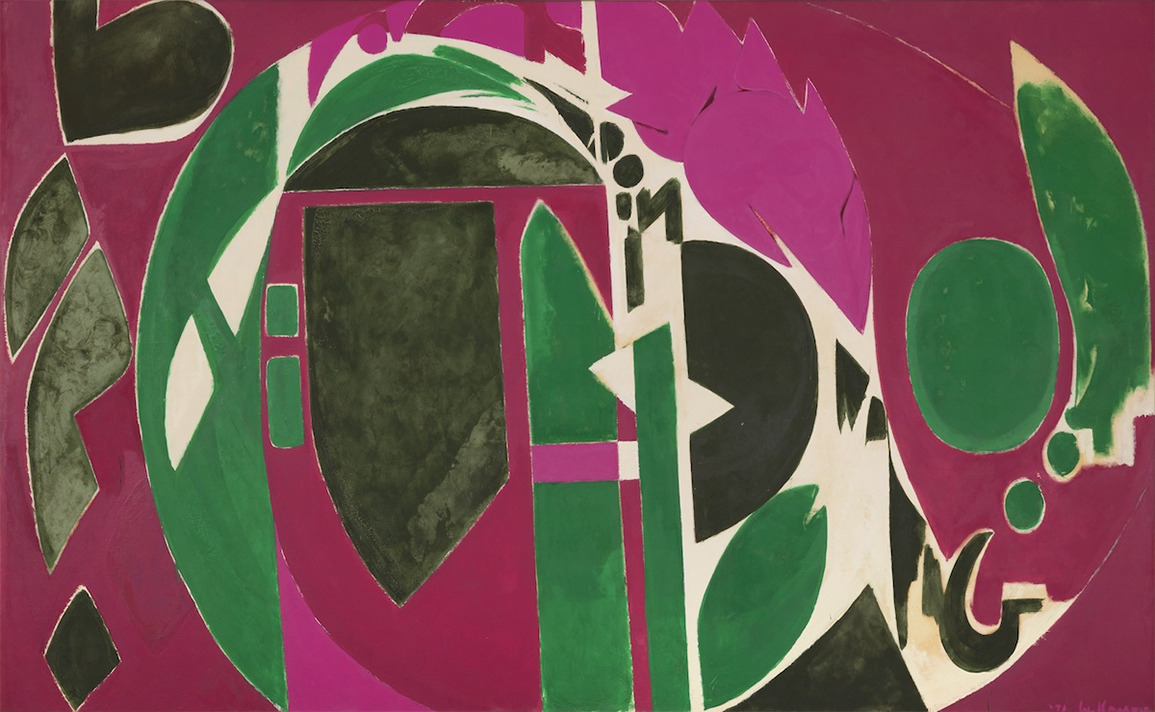
“Palingenesis”, 1971.
As the word’s meaning suggests, this painting shows Krasner’s interest in rebirth and metamorphosis. This general theme became apparent in Krasner’s later works; her earlier works were more literal… often situated in nature or self-portraits.
Image courtesy of: ArtNews
While she was still alive, Krasner was known more as “Pollock’s wife” than as an artist in her own right. Many people, especially during that time, found it impossible to admit that she was anything more than just a “wife who also paints.” Others believed that her sole influence was Pollock.
It is clear that there is some of Pollock’s influence in her work; after all, he was at the center of the New York Abstract-Expressionism movement. Naturally, Krasner learned from Pollock’s genius… however, her artwork proclaims a deep individuality.
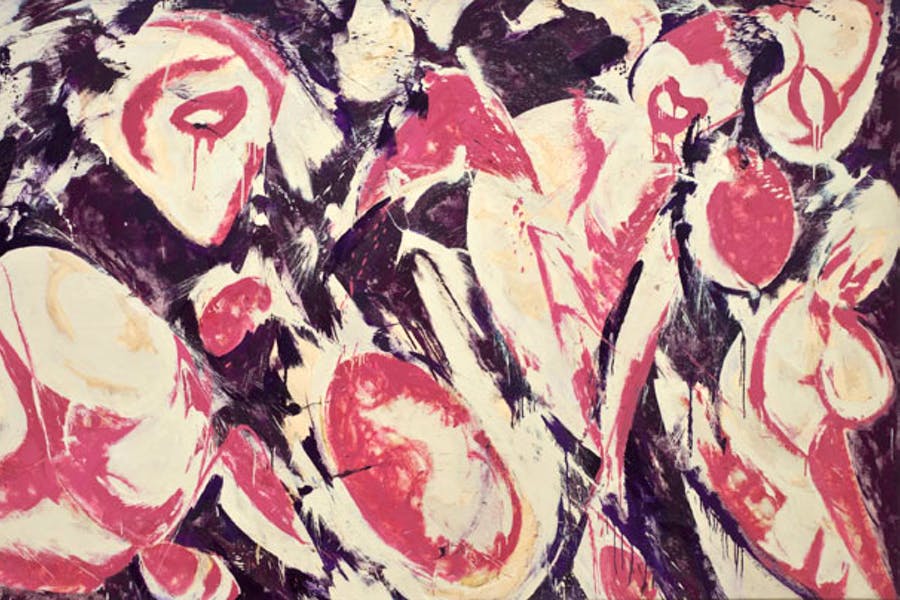
“Gaea”, 1966.
Named after the Greek goddess of earth, this painting shows both different body parts (an eyebrow, lips, and breasts) and oval shapes in purple, cream, and pink hues. Even though there are clearly many body parts floating around on the huge canvas, the complete body is not displayed.
Image courtesy of: Apollo Magazine
Krasner’s strongest paintings were made in the 1960’s. It was during this time period, shortly after Pollock’s death, when Krasner felt the most free. While Pollock was alive, Krasner had the responsibility of dealing with daily life’s practical matters. In addition, Pollock’s severe alcoholism impacted Krasner’s creativity and weighed her down, both figuratively and literally.
Following Pollock’s death, Krasner’s tight symbols and busy canvases unwound themselves into feminine shapes with open space around them. The sweeping strokes of paint, even though abstract, were not devoid of content.
